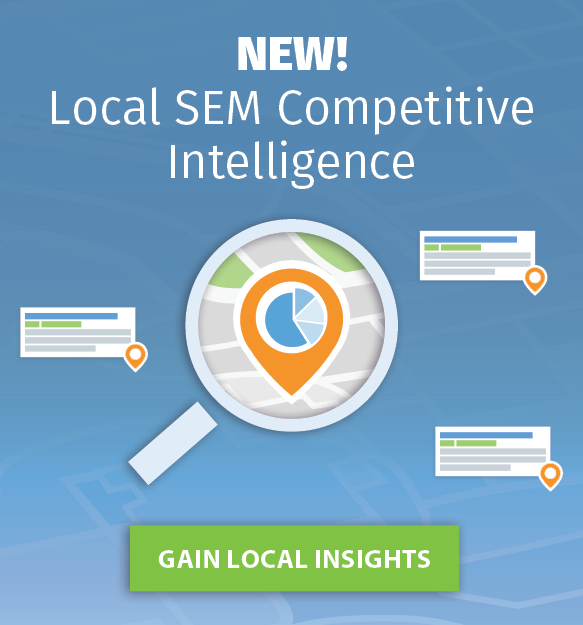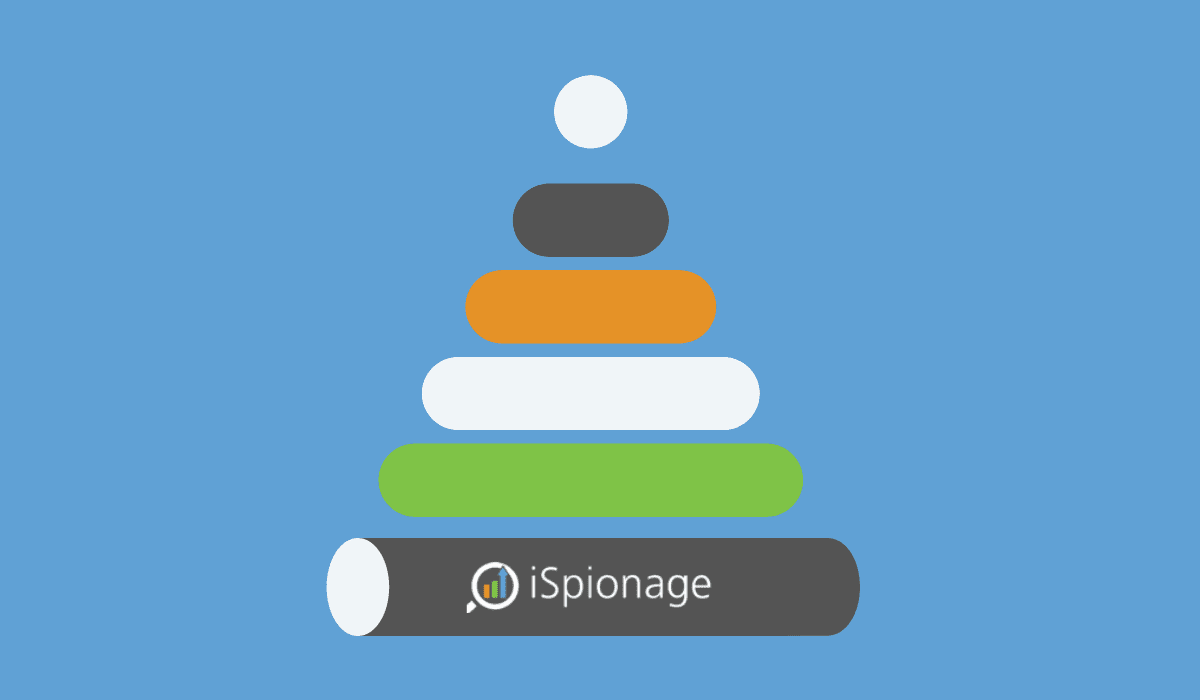
Lots of articles out there will give you an exhaustive list of competitive intelligence tools — 50 or more. But this just adds to the noise and confusion, and doesn’t help you navigate the vast marketing technology landscape. Instead, we’ve chosen to curate a lineup of our favorite competitive intelligence tools for a marketer’s stack. That is, for each use case or purpose, we’ve listed the one tool we recommend, discuss why, and dive into their unique features.
We’ll review our chosen tools for the following types of competitive intelligence:
- Brand Strength and Company Structure
- Tracking Google Search Appearances
- Monitoring Competitor Reviews
- Learning Competitor Company Info
- SEO, PPC, and Display Advertising
- Social Media and Content Strategy
- Email Marketing
The tools in this guide will provide actionable competitive intelligence that can be used to inform and shape your marketing strategy.
(Keep in mind: we’ve made all of the images in this post clickable so that you can get a better look at everything.)
Brand Strength and Company Structure
Google Alerts: For tracking Google search appearances
Quick, easy, and free. Google Alerts is basic best practice for tracking competitors. You can set up alerts for brand, product, or service names and alternate spellings — plus abbreviations, acronyms, nicknames, and also key team member names to track their individual profiles.
ReviewTrackers: For monitoring competitor reviews
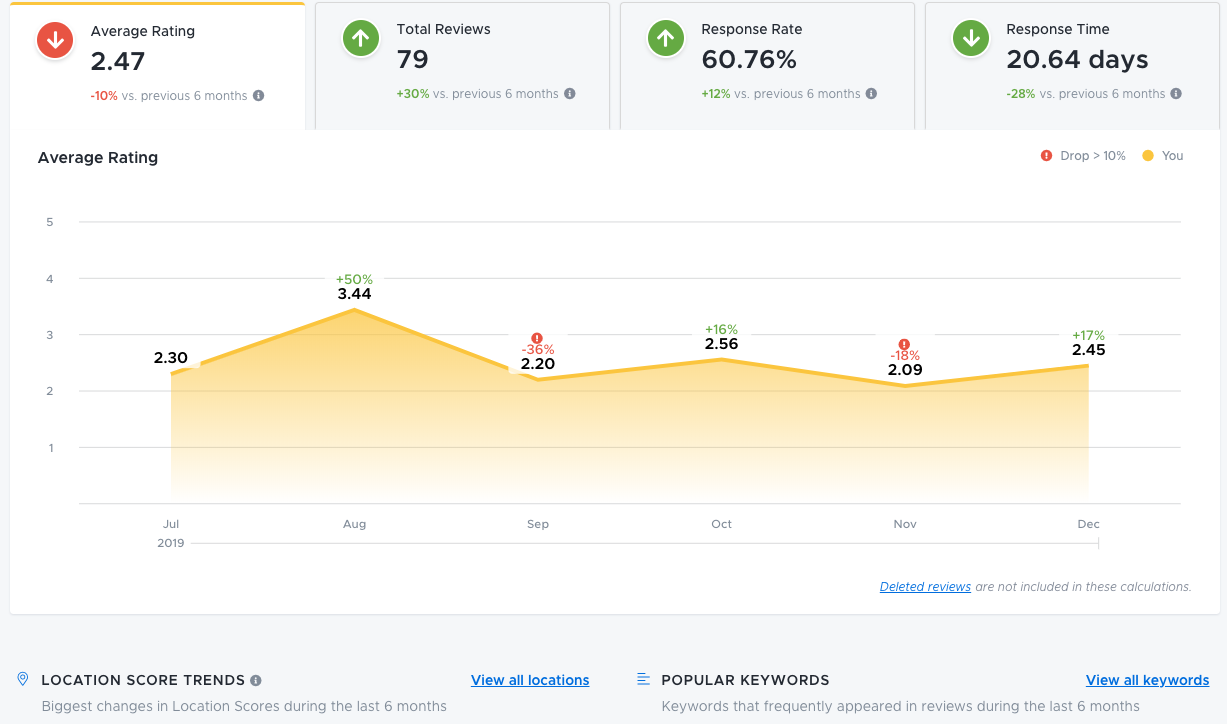
ReviewTrackers is typically known as a tool for aggregating and managing your own reviews (or your clients’ reviews if you’re an agency), but it can also be used as a competitor intelligence tool. It covers all the major review platforms: Facebook, TripAdvisor, Yelp, Google, and more.
With their “Essential” plan ($119 per month), you can access the ReviewTrackers competitor analysis features. Here you can compare your business against up to ten competitors, with two years of local review data. This allows you to monitor the trends in the volume and quality of competitor reviews over time, and these insights can then be exported in PDF or CSV reports.
You can also conduct snapshot competitor research on specific competitors using the basic ReviewTrackers plans by adding single locations to the dashboard (one at a time).
Crunchbase: For learning how competitor businesses are structured
Crunchbase has grown quickly since 2007 to become a global online hub for entrepreneurs and investors. The platform’s database reveals what (and who) lies behind thousands of public and private organizations — including information about investment and funding, valuations, leadership teams, mergers, acquisitions, events, and key hires. This shows you what you’re up against, and will help you optimize your networking activities to make the right connections.
Crunchbase Pro costs $29 per month, which gives you access to advanced search functionality (filters), comparison graphs, and competitor alerts. You can monitor up to 100,000 companies at any time, see who is dominating market share, and track patterns across various sectors.
Search Engine Optimization (SEO)
iSpionage: For tracking competitor organic content performance
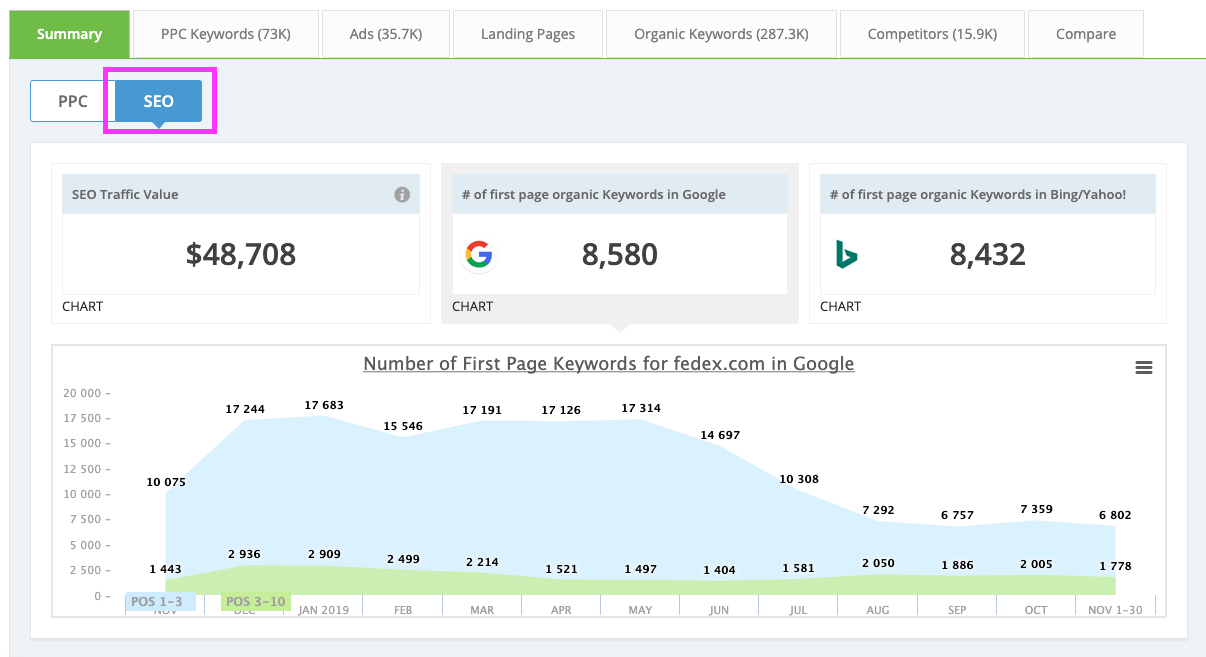
iSpionage is mainly known as a PPC competitor analysis tool, but we also offer powerful SEO competitor intelligence. We take a content-first approach, meaning that we prioritize content performance over competitor backlinks and other technical signifiers. This is because a page (or blog post) that ranks on page one for a range of high-intent keywords is more valuable to your competitor than a page with loads of backlinks — which is often the homepage anyway.
Therefore, the iSpionage SEO dashboard emphasizes the number of first-page organic keywords that your competitor content ranks for — and lets you dig into the trends, traffic volume, traffic value, and associated keywords for each page.
Our SEO Watch feature enables you to benchmark against specific competitors and follow them over time — tracking rankings, page performance, and share of voice (organic impression share) with automated weekly reports. You can also set up your SEO monitoring in local markets — allowing you to analyze SERP competitors in any given location:
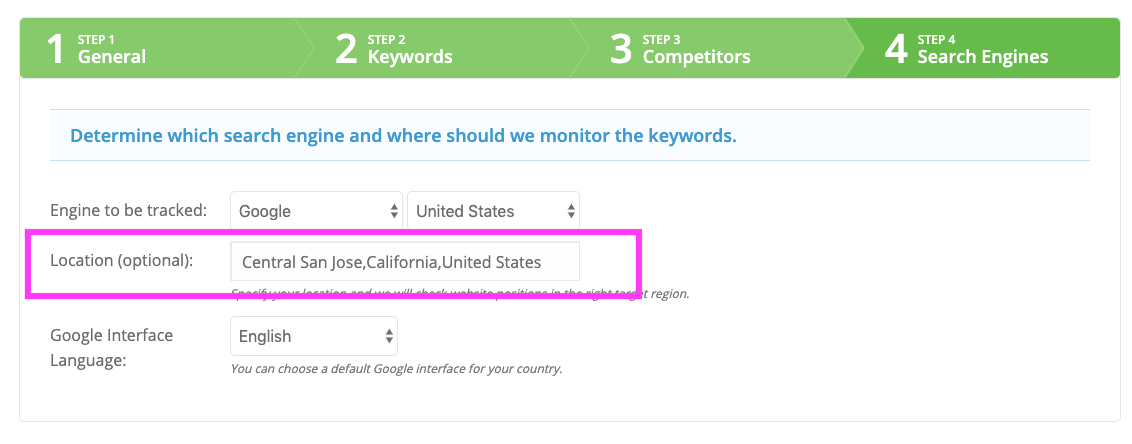
Sign up for a free iSpionage account to see competitor keywords, ad copy, and landing pages. Receive 10 free competitor reports and 3 complimentary competitor alerts per day.
Raven Tools: For competitor domain research and backlink analysis
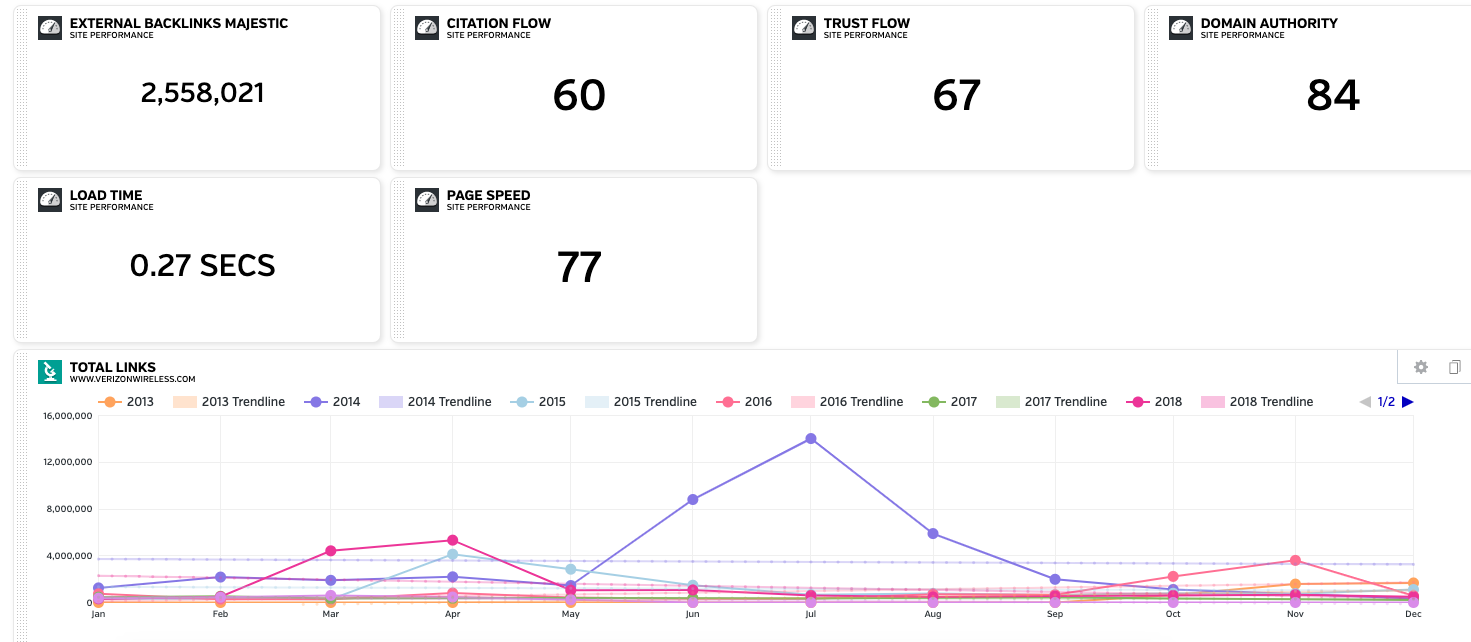
Raven Tools is one of our sister companies within the TapClicks family. Raven is widely-known for its reporting functionality, keyword research capabilities, and rank tracking. But as a tool for SEO competitor research, Raven provides key intelligence about technical performance — website load time, page speed (across devices), metadata, domain authority, and much more.
Raven’s backlink analysis shows you trendlines over time, and you can compare your site directly against competitors within the dashboard:

And you can get a view of who links to the top results for any keyword in the organic SERPs with the Link Spy feature. This insight allows you to see what links are powering the success of your competitors, and will help you plan a link-building strategy to match (and beat) them.
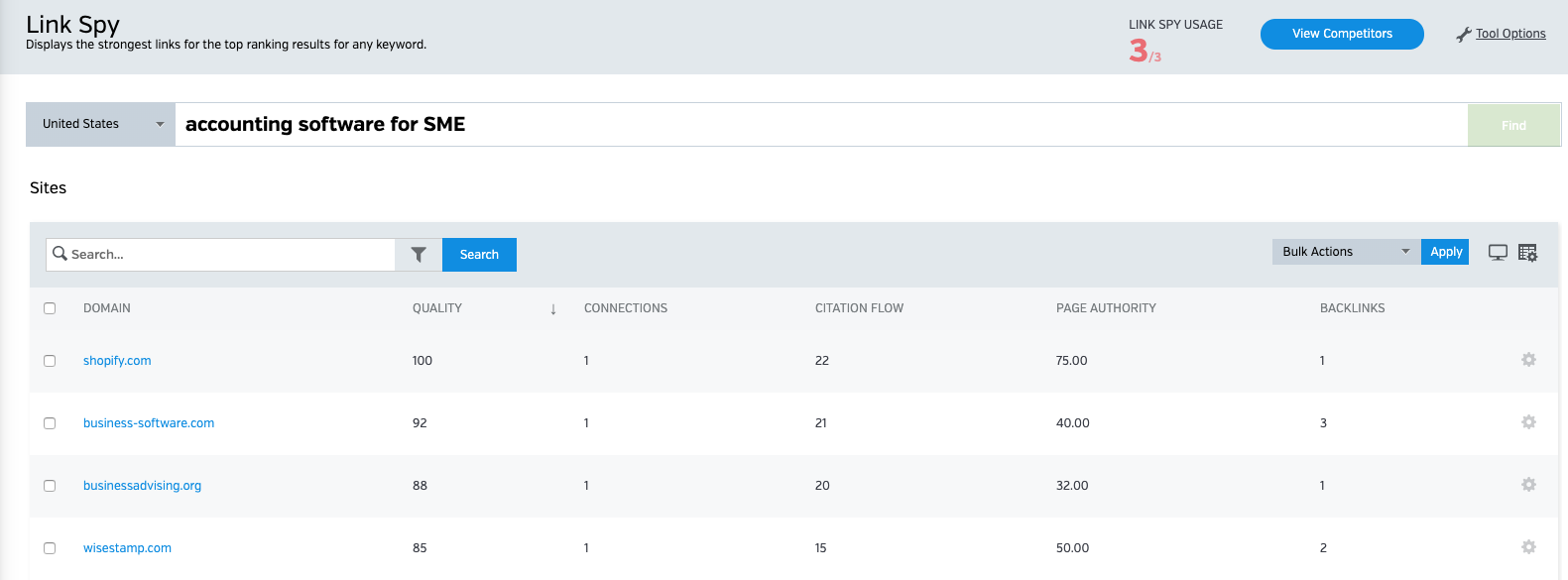
Pay-Per-Click Advertising (PPC)
iSpionage: For in-depth PPC competitor analysis
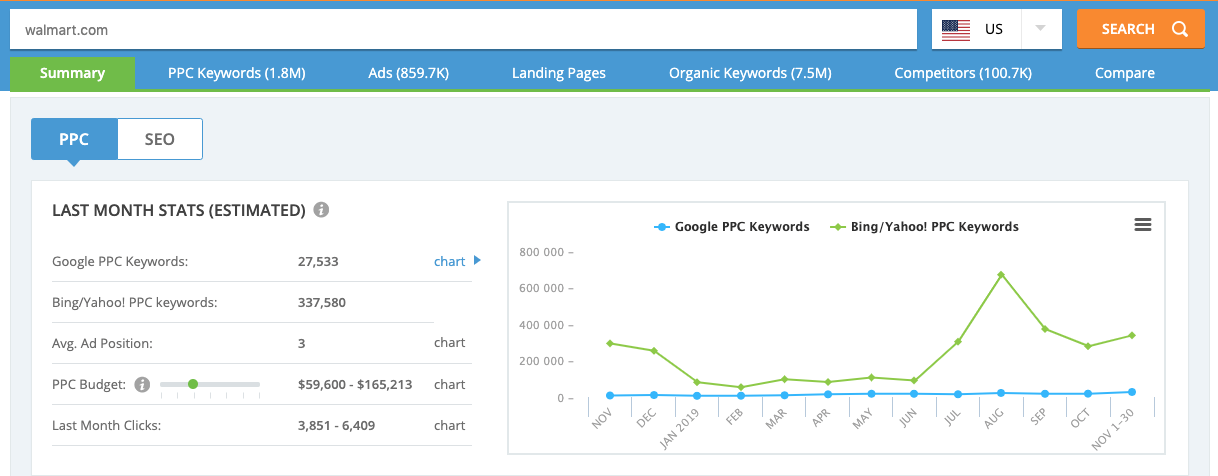
Fortunately, iSpionage has got you covered for both SEO and PPC competitive intelligence.
When Leon Krishnayana founded iSpionage back in 2008, he wanted to build a tool that reveals how competitors turn a profit with their PPC campaigns. What works for them, and what falls flat? Were there new players entering the market or were the same companies bidding on the same group of keywords every month? He wanted to know everything about the PPC landscape.
iSpionage offers this level of competitive intelligence functionality through two key sections of the product: Competitor Research and Campaign Watch. The former provides a snapshot of the competitive landscape for any keyword or URL (your own or a competitor’s), and the latter lets you track a specific set of competitors and monitor/compare their performance over time.
A few features set iSpionage apart from other PPC competitive intelligence tools:
1. The Complete User Journey
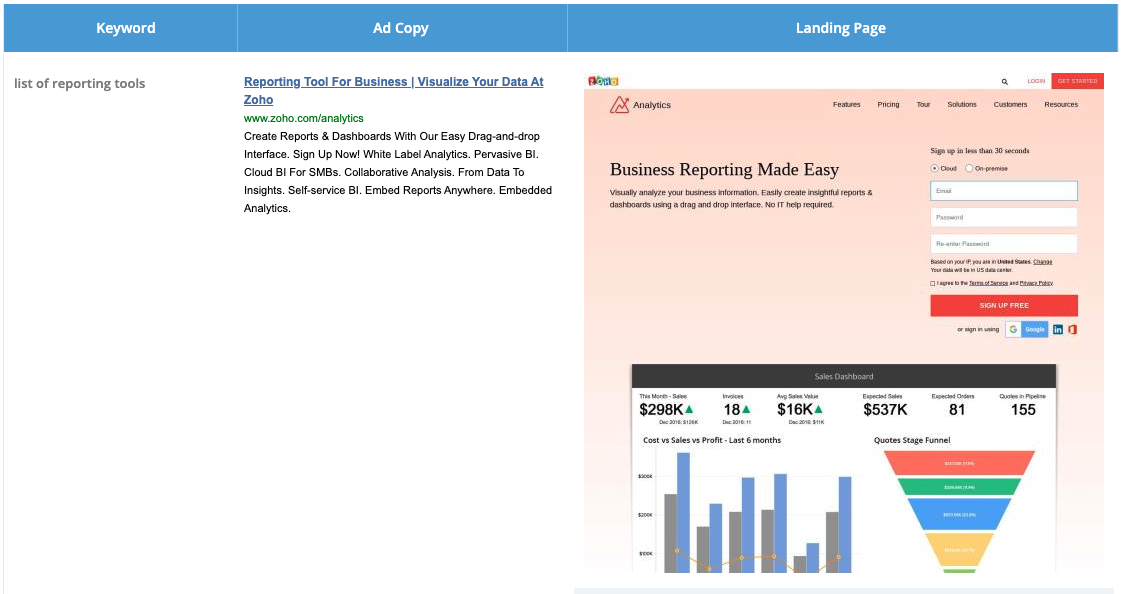
iSpionage shows the whole user journey, including competitor landing pages. You can see which keyword drives which ad, and where the user ends up to be converted. In contrast, many other competitor intelligence keep the data separate — or just show the URL of the landing page.
The dashboard also collates landing page snapshots from competitors for you to compare, and our landing page gallery gives you lots of design inspiration from various industries.
2. Local PPC Data
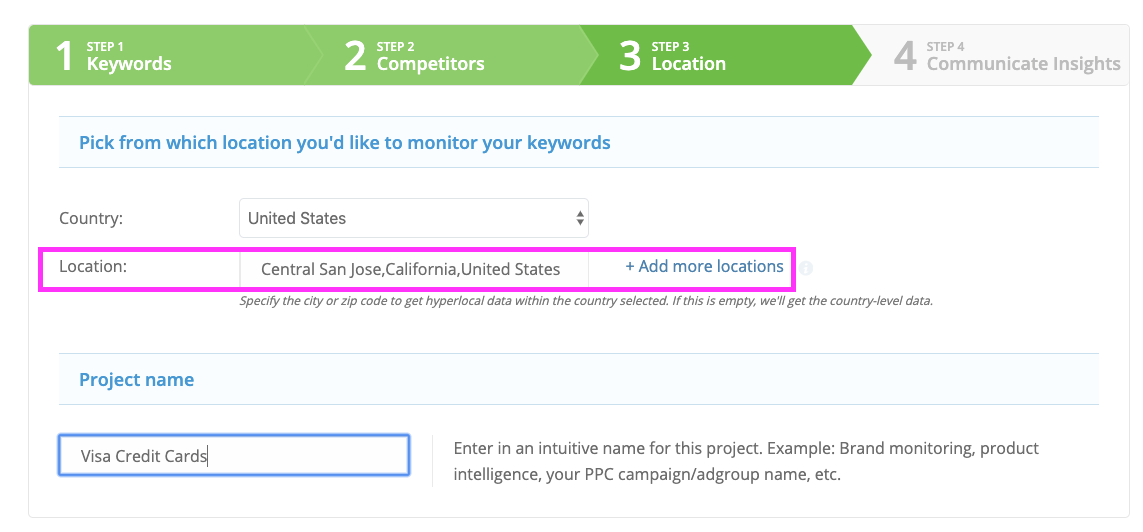
In the Campaign Watch section of iSpionage, you can track competitors on a local level. iSpionage is the only competitive intelligence tool to offer this type of local insight. It means you can track PPC competitor keywords in geographical areas — whether you’re representing a single local business or a national business with local branches or franchises.
3. Proprietary Scoring Algorithms (KEI and AEI)
iSpionage uses our own Keyword Effectiveness Index (KEI) and Ad Effectiveness Index (AEI) metrics to indicate the profitability of competitor campaigns.
The KEI is designed to help you know which keywords are working and not working for your competitors. If a keyword has been seen active for a long duration, seen recently, and has a high average position, we can assume that it is using the advertiser’s budget. Therefore, it must offer a good return on investment or it would have been cut from the PPC campaign. So we would give this keyword a high KEI score to show that it is valuable to your competitor.
The AEI scoring is similar, but it is applied to competitor ads rather than keywords. With ad copy being tinkered with so often, the fact that a competitor maintains one variation is a signal of success. This gives you a basis to work from in terms of knowing what will generate clicks.
Sign up for a free iSpionage account to see competitor keywords, ad copy, and landing pages. Receive 10 free competitor reports and 3 complimentary competitor alerts per day.
Display Advertising
Adbeat: For tracking display advertising competitors
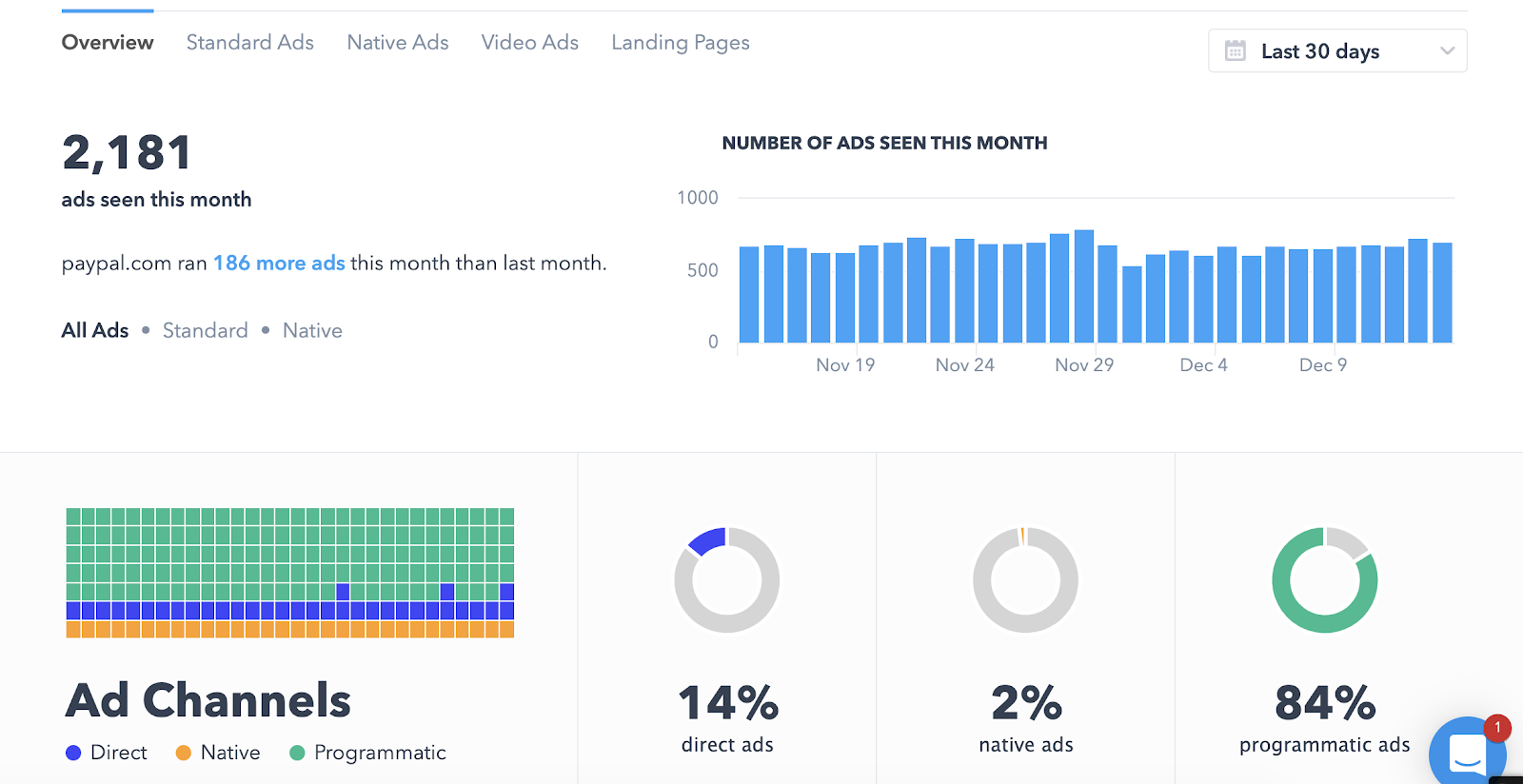
Adbeat detects and processes over 8 million display ads every day, giving its users access to data from over 120 ad networks. You’ll get a full perspective of your competitor’s media buying strategy, including their best publishers, ad types (standard, native, video, etc.), and networks.
You can also set up automatic alerts to ping you when a competitor launches a new campaign, and benchmark yourself against specific advertisers over time. As with most competitor intelligence tools, this data can be wrapped up into exported PDF, CSV, and PowerPoint reports.
Adbeat isn’t cheap. The Pro package starts at $249 per month. However, there is a free version that gives a taste of what the software has to offer. If you just want to check whether a specific competitor is actively advertising in display channels, and you want to see a snapshot of their ads and the publishers and networks they use, the free Adbeat version is a good starting point.
Social Media
Mention: For monitoring brand reach on social media
Quite simply, Mention is a tool that helps you track mentions of your brand and its competitors on social media. You can add alerts for multiple competitors, and Mention will automatically track all the major social channels — plus blogs, forums, and news outlets.
This means you’ll know where competitors are being talked about, and what people are saying about them. Within the Insights Center section of Mention, you can dig into brand sentiment patterns, and see trends in volume of competitor mentions and their social reach over time.
Mention also allows you to track the influencers who mention your competitors, which enables you to follow influencer marketing campaigns — and also see “natural” influencer conversations.
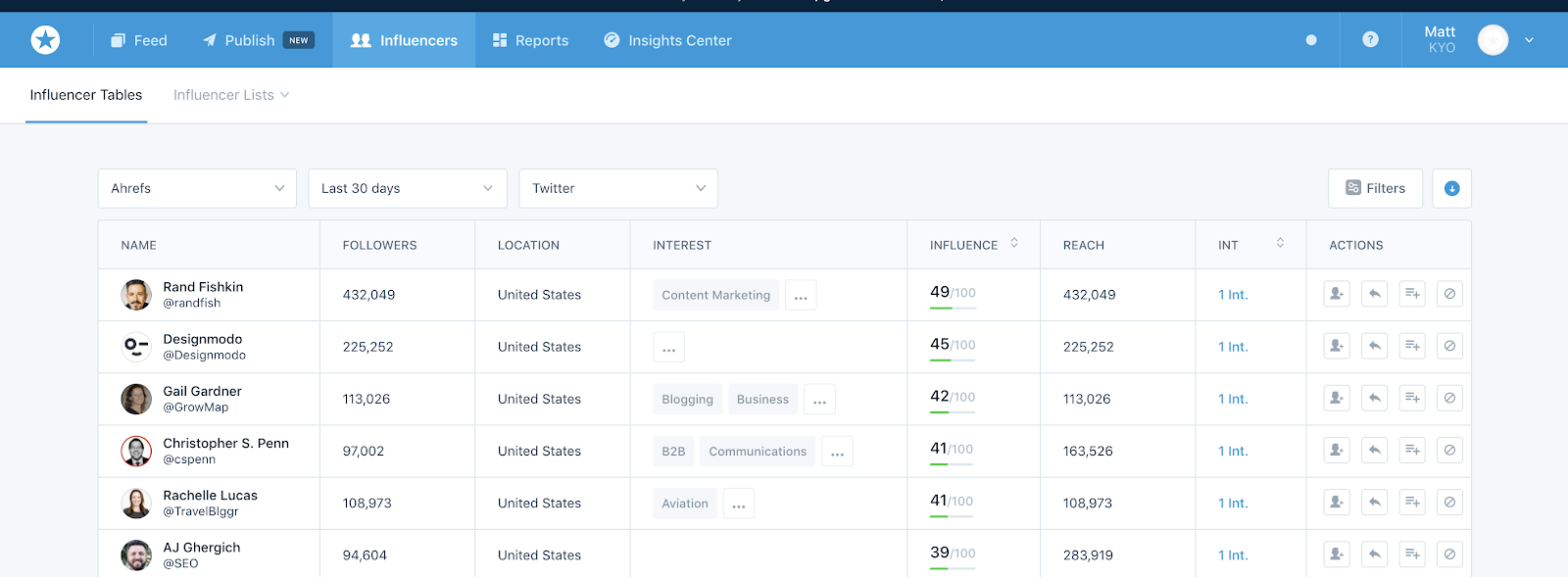
Content Strategy
Note: iSpionage’s SEO competitor intelligence features will help you understand the organic content strategy of your competitors, by highlighting the content that performs best for them (i.e. the content that ranks for the most organic keywords). But there’s another tool to check out:
BuzzSumo: For analyzing the highest-performing content in your niche
The most simple use case for BuzzSumo is to search for topics in your niche and see which websites are dominating the conversation. Their tool measures content success in terms of engagement — across Facebook, Twitter, Pinterest, Reddit, and also the number of backlinks.
A nice additional metric is the “Evergreen Score” which measures engagement 30 days after the content is published. A high Evergreen Score indicates that an article has maintained its relevance to an audience for a long period of time, as opposed to just being a flash in the pan.
The default view when you search for a keyword (e.g. “crm software” below) simply lists the content in that niche which has performed best over your set time frame (e.g. in the past year).
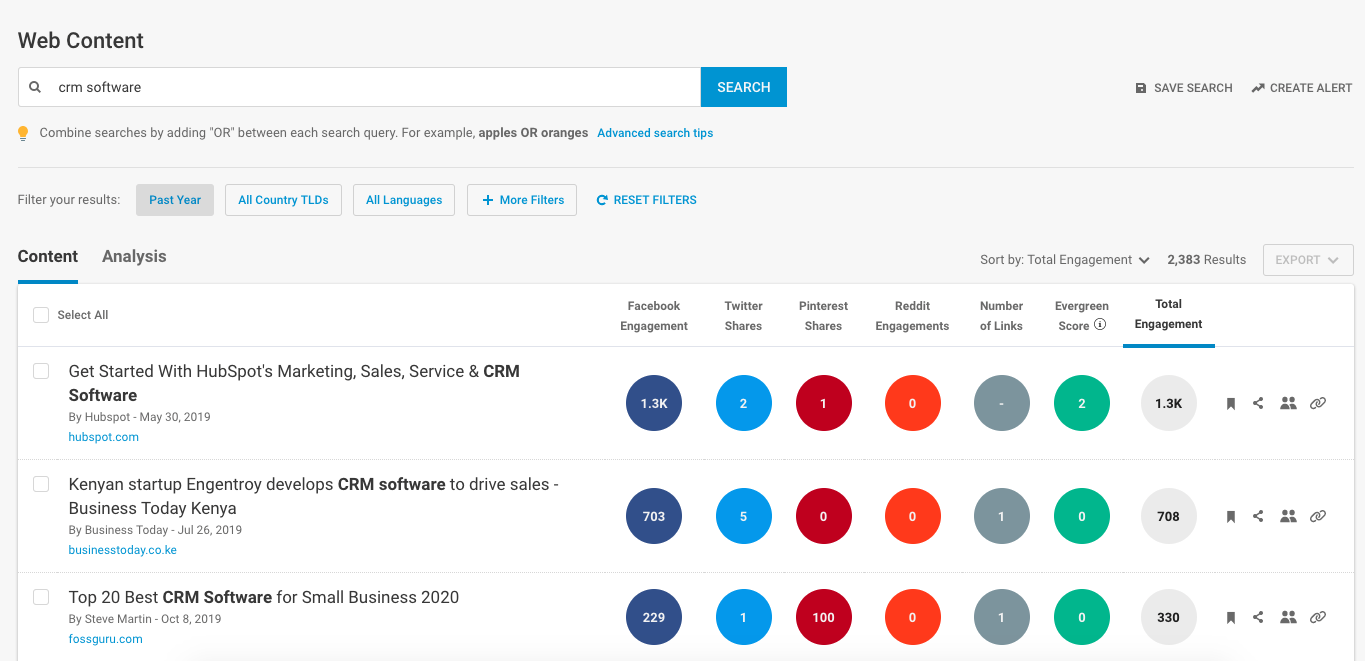
This list is certainly interesting, but BuzzSumo becomes far more useful when you add filters to your search. You can limit the results to competitor domains, and dig into their strategy for targeting each topic or keyword with content. This is important because it helps you cut through the noise and clutter of the web to review the content that matters to your business.
You can also filter by content type and word count, which helps you further narrow down your competitive research to blog content, videos, or infographics:
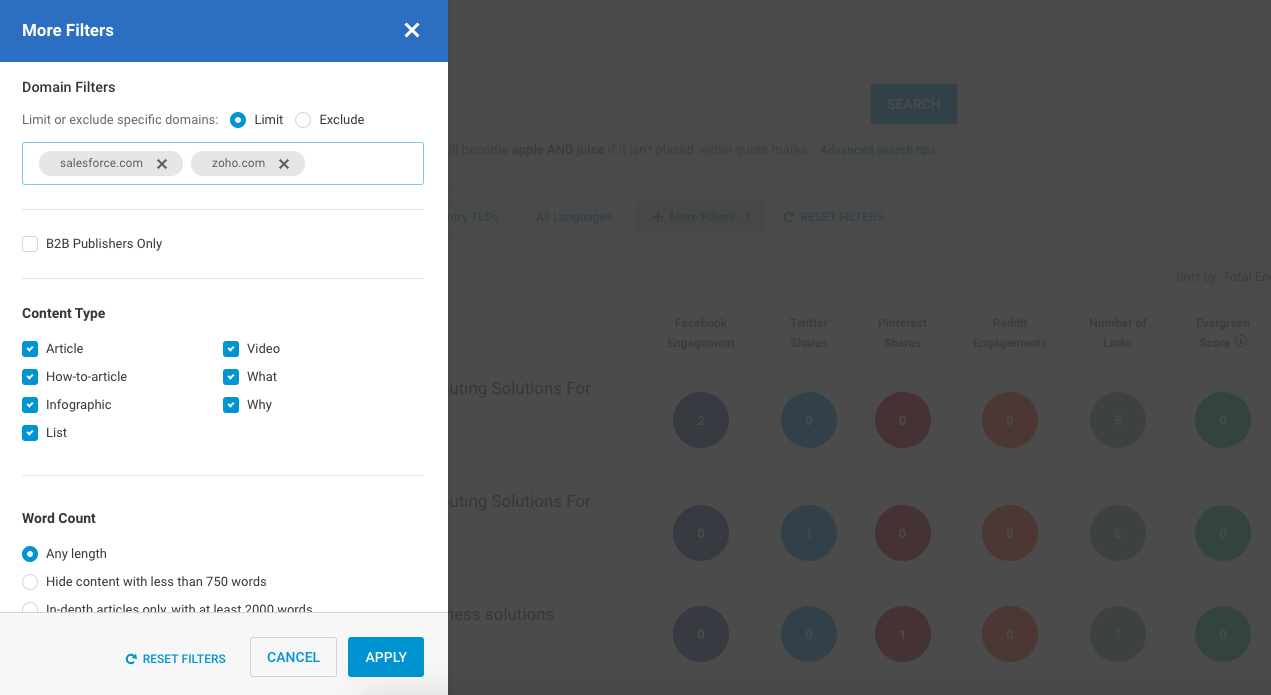
Other aspects of BuzzSumo overlap a bit with Mention, especially the Monitoring feature.
Here you can create alerts for when competitors are mentioned on the web, but the tool goes further than Mention by allowing you to set up alerts for when specific domains mention specific topics or keywords in their content. This is important because you can react quickly to match a competitor’s piece of content, or see if they are battling you for specific keyword topics.
The below screenshot shows the last 30 days of HubSpot vs. Salesforce vs. Zoho, listing when each domain has published content for the keyword “crm software”.
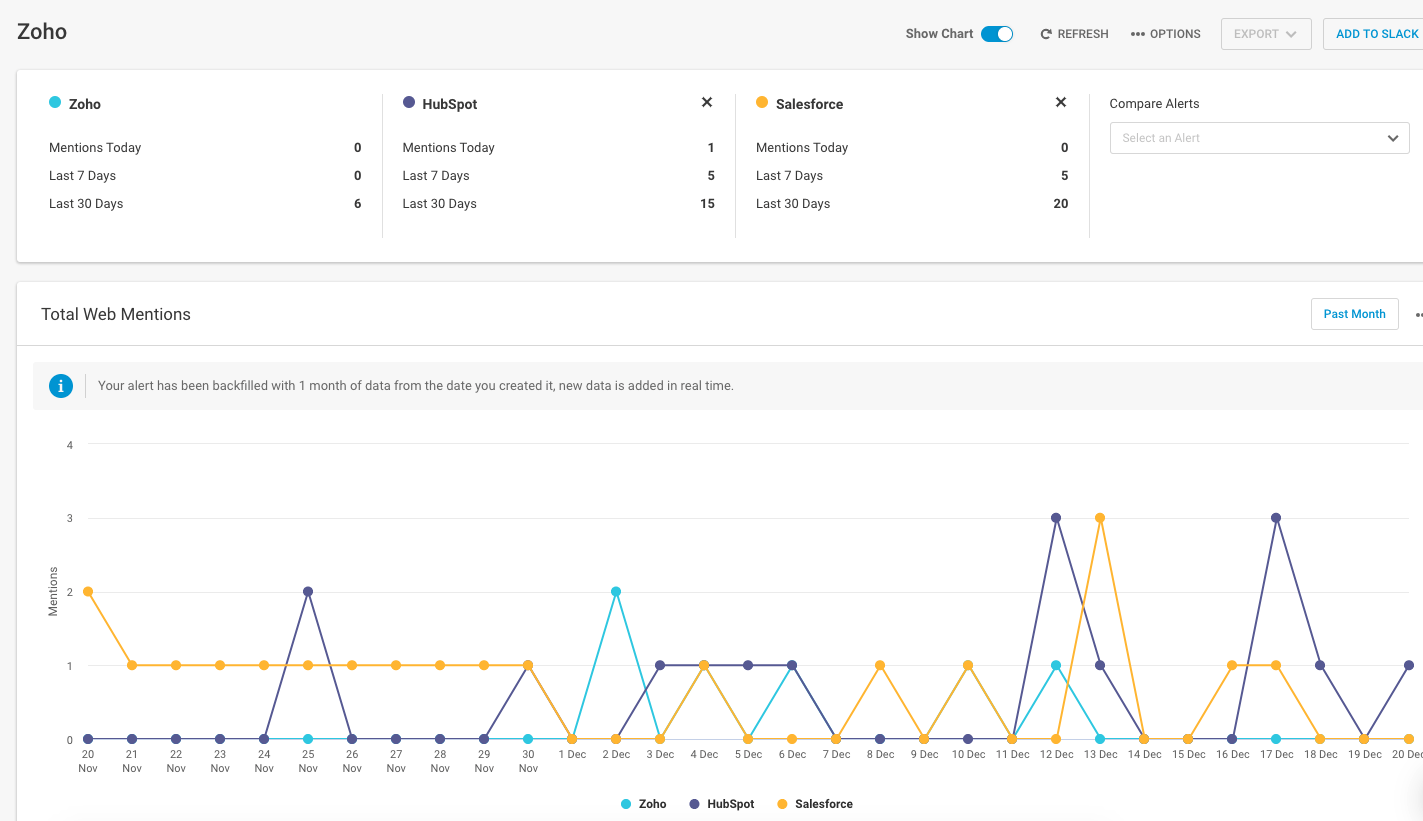
You can use the same feature (with different filters) to monitor other publishers for when they mention your competitors, or even when they mention a combination of a competitor and a specific topic or keyword. This can help you track product launch announcements, PR releases, guest blog placements, and other aspects of your competitors’ content strategies.
Email Marketing
MailCharts: For reporting on competitor email campaigns
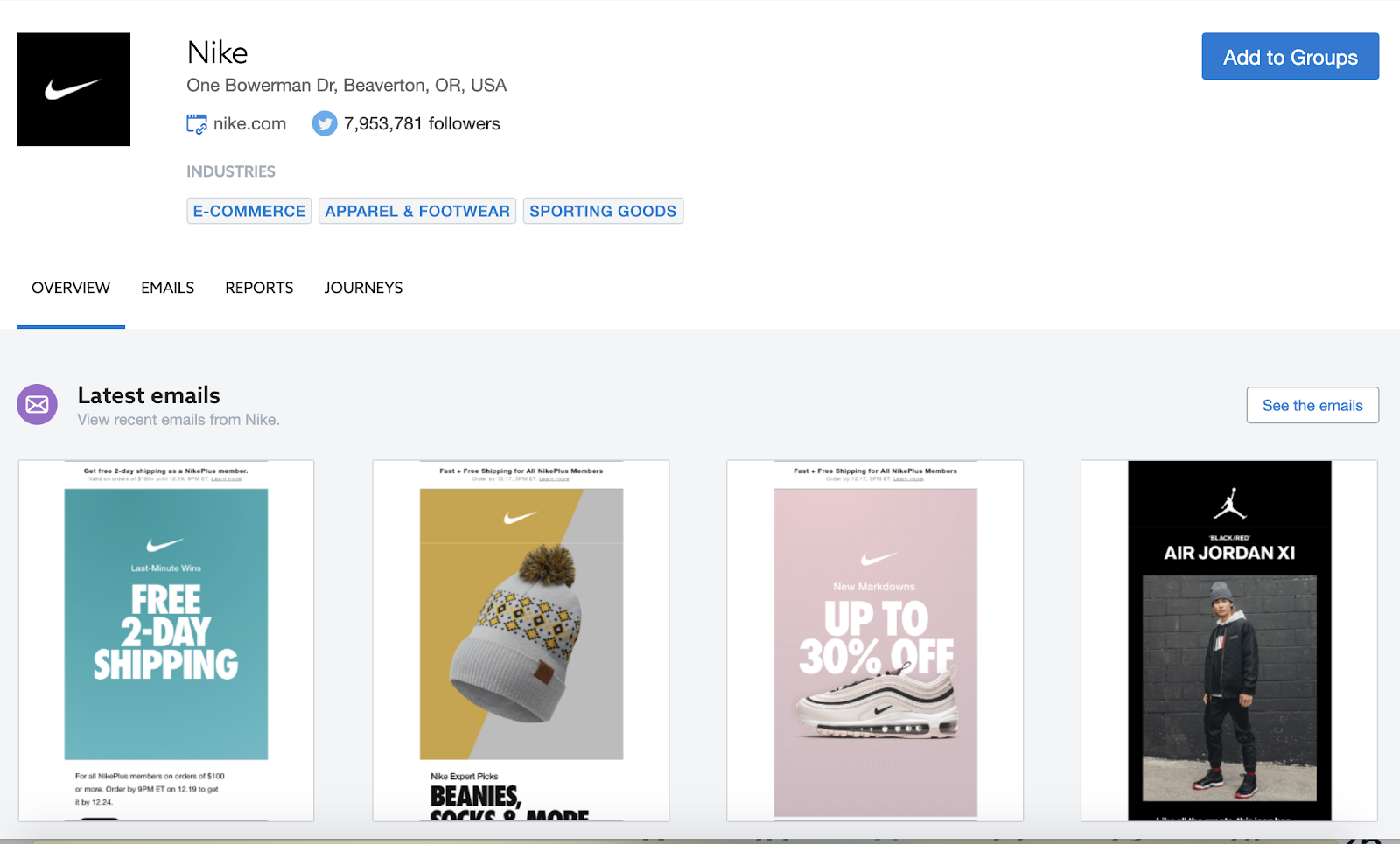
You might think that competitor email campaigns are hidden away inside the inboxes of their customers, but MailCharts opens up the access without you having to manually sign up to every newsletter in your niche. And not only does MailCharts show you newsletters and sale offers, but it gives behind-the-scenes insight into customer journeys — including the automated sequences triggered by abandoned carts and completed purchases:
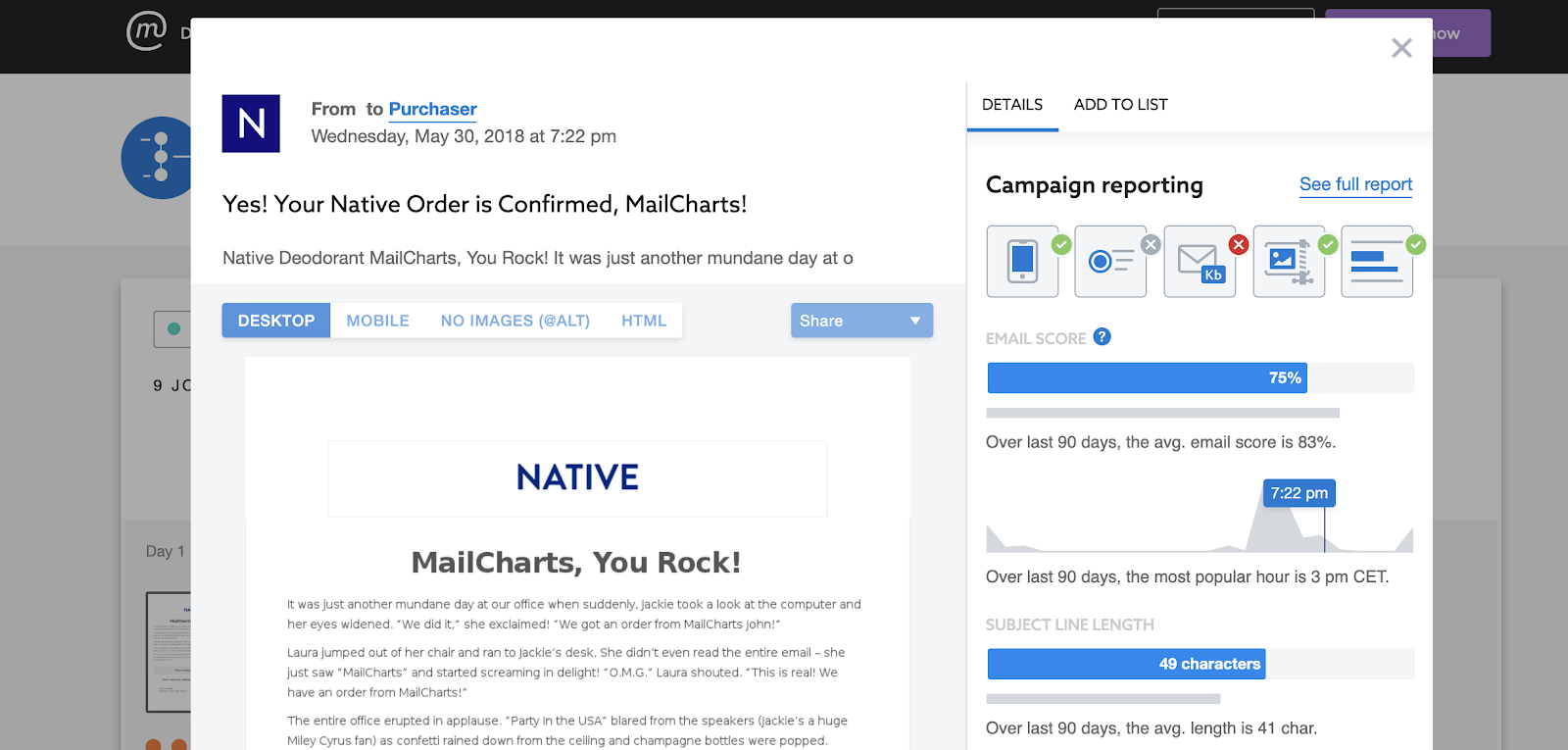
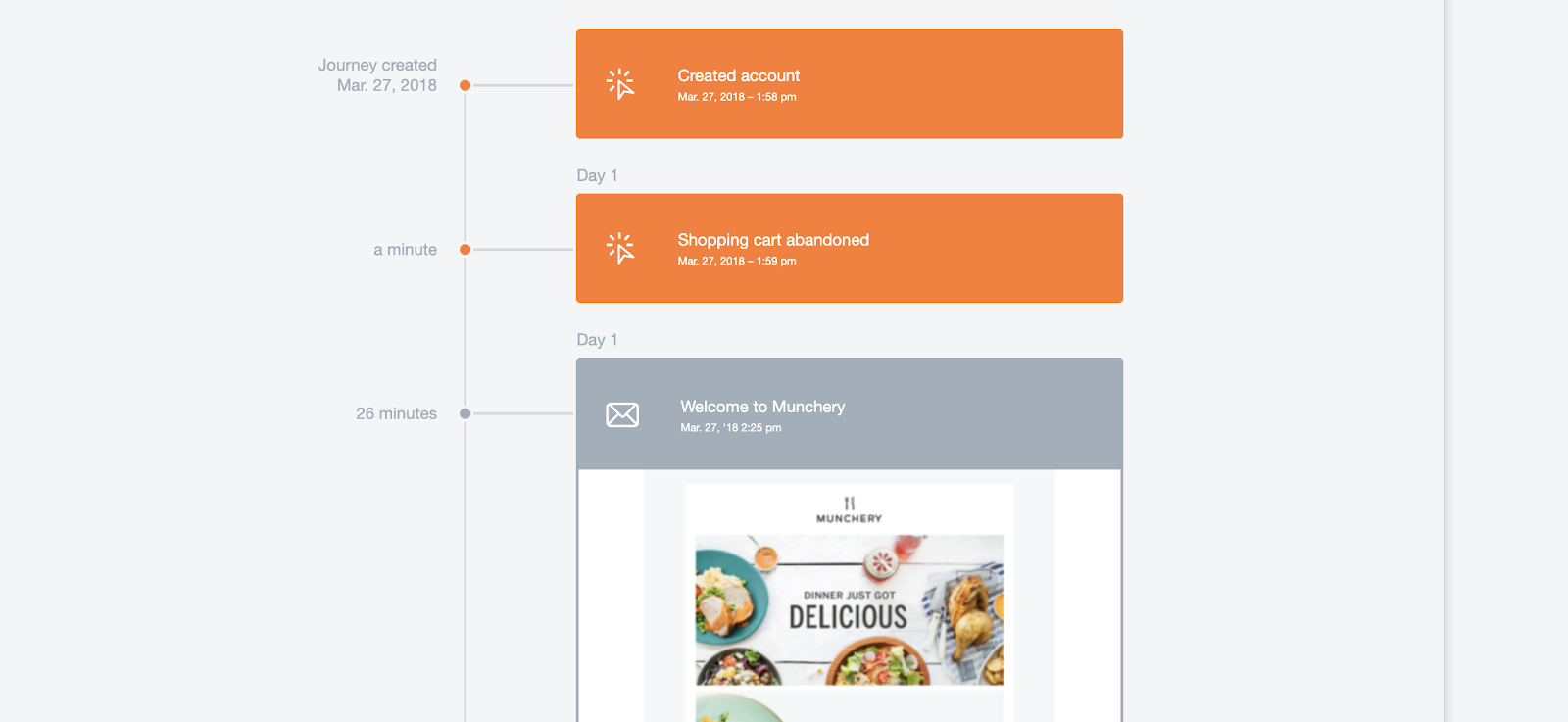
In addition to its huge gallery of email snapshots (which you can browse per brand or per industry), MailCharts allows you to add specific companies to a custom group and track them over time. You can compare one against the other, and generate reports to see how any competitor has structured their promotional email campaigns. This is useful, because it can help you plan your own campaigns — and the email snapshots will help you optimize your offers.
Final Summary: Competitor Intelligence Tools for Marketers
In each section of this guide, we’ve featured competitor intelligence software that gives you actionable competitor insights to inform your marketing strategy.
To understand the background of your competitors’ business structure, team, and investment status, the Crunchbase database provides unrivalled information. To track mentions of your competitors across the web, Google Alerts, Mention, and BuzzSumo will keep you abreast of all the publishing channels that matter. And ReviewTrackers will allow you to monitor volumes of reviews and patterns of sentiment among your competitors’ customer base.
When it comes to SEO and PPC, we believe that iSpionage is a strong candidate — due to our emphasis on organic content performance, and our unique PPC features such as the local PPC data, the landing page snapshots, and our proprietary scoring algorithms for ads and keywords. Combined with Raven Tools for a more technical perspective on website performance and backlinks, you’ll have a full competitor intelligence tech stack for organic and paid strategies.
And finally, Adbeat is the tool for tracking display advertising, and MailCharts gives you a window into competitor promotional campaigns and automated email sequences.
Sign up for a free iSpionage account to see competitor keywords, ad copy, and landing pages. Receive 10 free competitor reports and 3 complimentary competitor alerts per day.
